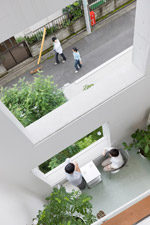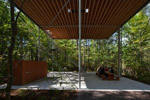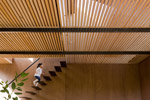Open
11:00-18:00
(Fri.-19:00)
Closed on Sun., Mon., national holidays (except National Foundation Day on Sat., Feb. 11)
Admission FREE
|

|
 |

|
House in a Forest
(2006, Nagano)
©Go Hasegawa & Associates |

|
House in Sakuradai
(2006, Mie)
©Shinkenchiku-sha |

|
Apartment in Nerima
(2010, Tokyo)
©Iwan Baan |

|
Pilotis in a Forest
(2010, Gunma)
©Shinkenchiku-sha |

|
House in Komazawa
(2011, Tokyo)
©Iwan Baan |
|